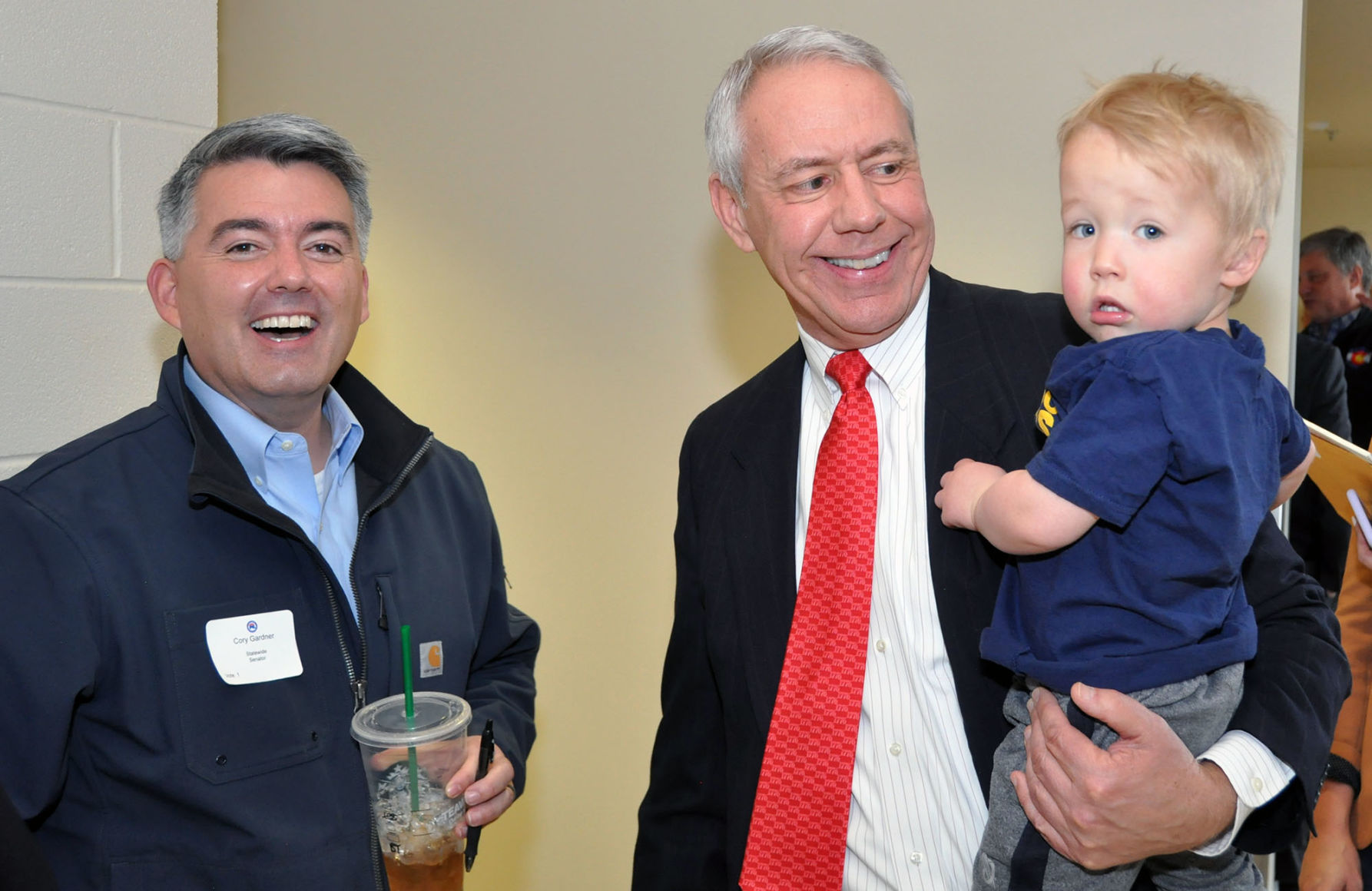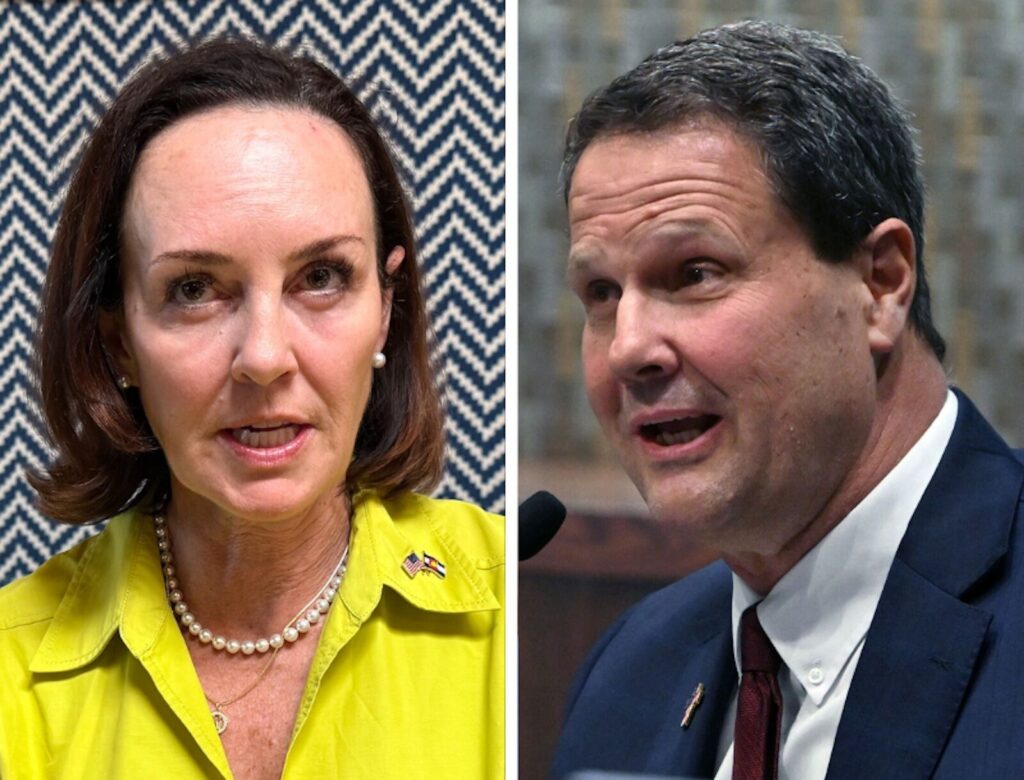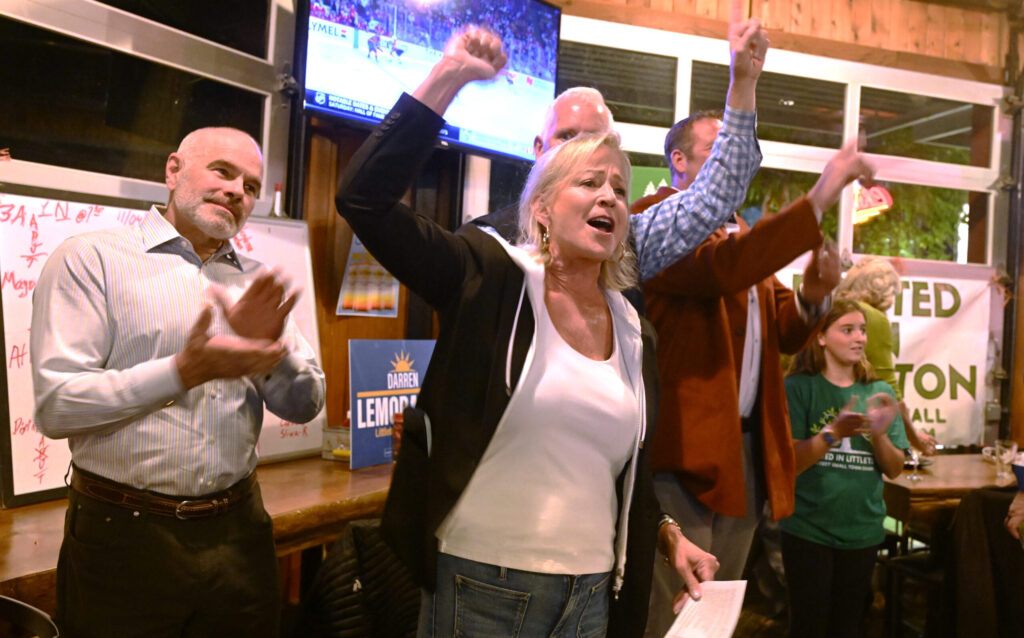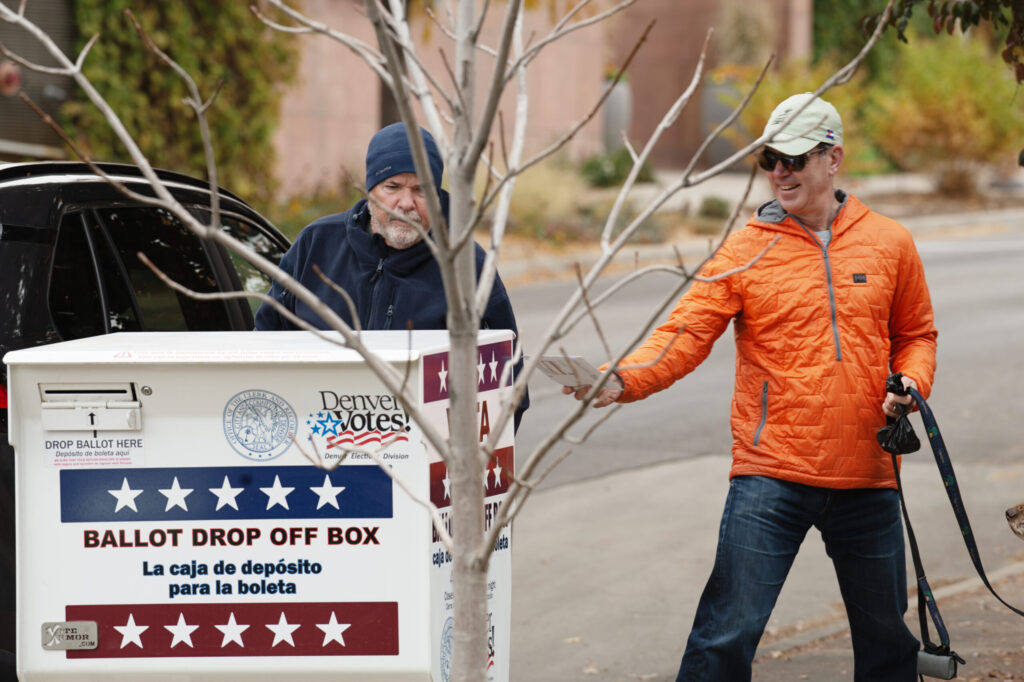TRAIL MIX | Candidate switcheroos are nothing new in Colorado

Wouldn’t you know it, less than a week after last week’s Trail Mix column went to press, it was obsolete.
In the holiday news lull, it had seemed like a good opportunity to take stock of the candidate line-ups in major Colorado races.
While savvy political watchers have been expecting at least a few additional contenders for statewide and federal offices to emerge soon after the first of the new year – not coincidentally, the start of a new fundraising quarter – it seemed like a safe bet that the candidate roster would remain unchanged through the holidays.
Republican Erik Aadland, however, had other plans.
On Dec. 27, Aadland’s campaign announced he was moving from the U.S. Senate race to the congressional contest in the Democratic-leaning 7th District, hoping to challenge U.S. Rep. Ed Perlmutter instead of U.S. Sen. Michael Bennet.
The West Point graduate and former oil and gas company executive said he made the move because the terrain in the two races had changed significantly since he launched his Senate campaign in June.
Since then, several Republicans with more political experience had joined the Senate primary, including a couple with the potential to pour millions of dollars into their own campaigns. What’s more, the redistricting process had produced a more competitive 7th CD, putting Perlmutter in the sights of national Republicans hungry to flip as many seats as possible in what could be a GOP wave election.
Many considerations go into any nascent candidate’s determination about when to launch a campaign, with no one approach considered sure-fire. Still, there’s little reward in kicking things off close to the end of a quarter – virtually guaranteeing an underwhelming initial fundraising report – and plenty of reasons to avoid trying to make a splash in the last half of December, when voters aren’t particularly focused on politics.
But once he’d arrived at the decision, it made as much sense for Aadland to make his move from one federal race to another on the Monday after Christmas as it would have to wait for a another news cycle.
Switching races midstream isn’t without its challenges, campaign veterans say. The optics can be bad if it looks like a candidate is merely office-shopping – voters like to pick their elected officials, rather feel like it’s the other way around – but candidates who convey that they believe they can make a difference in a different race are unlikely to suffer from switching.
It’s a lot easier, too, to move from one federal race to another, or from one state-level race to another – from Senate to House, like Aadland did, or from governor to attorney general, or vice versa, to cite another recent example – because candidates can transfer money raised for one campaign to the other without running into complicated campaign finance issues.
Aadland has some company among recent Colorado candidates, including another Republican who made the same exact switch a dozen years ago.
Like Aadland this year, then-Aurora City Councilman Ryan Frazier spent nearly six months in 2009 seeking the nomination to challenge Bennet but then shifted late in the year from a Senate run to the 7th CD, eventually winning the nomination to face Perlmutter in November 2010.
Frazier, one of the early entrants in Colorado’s 2010 Republican U.S. Senate primary, attracted some national attention because he might have become only the second Black Republican elected to the Senate since Reconstruction.
But by the time fall rolled around and after a couple of lackluster fundraising quarters, national Republicans recruited former Lt. Gov. Jane Norton into the race, and Frazier decided that his chances were better running against Perlmutter, who had become a top GOP target in what was shaping up to be a Republican wave year.
“The 7th Congressional District represents the right path, right now to do my part in helping make America better,” Frazier said.
As it turned out, Frazier lost to Perlmutter by nearly 12 points after winning the primary over fresh face Lang Sias, who went on to serve in the Colorado legislature and run for lieutenant governor in 2018 and is running for state treasurer in next year’s election.
Norton lost the 2010 Senate primary to a dark horse candidate named Ken Buck, a district attorney who caught the fancy of tea party voters but lost to Bennet by less than 2 points.
Four years later, Buck became the frontrunner in a crowded field of Republicans hoping to oust Democratic U.S. Sen. Mark Udall in 2014.
Again, however, national Republicans persuaded a heavyweight to join the Senate primary, sensing that Udall was vulnerable in the midterms with an unpopular Democrat occupying the White House. This time it was U.S. Rep. Cory Gardner, who abandoned his re-election bid in the 4th Congressional District and declared his candidacy for the Senate just days before precinct caucuses.
Buck and most of the other leading Senate candidates cleared the way for Gardner to secure the nomination, though then-state Sen. Owen Hill dug in his heels before eventually withdrawing. Gardner prevailed at state assembly over then-state Sen. Randy Baumgardner, the only Senate candidate who stuck it out.
Buck switched gears immediately to run for the suddenly open 4th CD seat at the same time Gardner announced his Senate bid, though he had to make it past a number of primary challengers to secure the nomination in the heavily Republican district.
Both Republicans won in the fall after effectively swapping the offices they were seeking.
Something similar happened in November 2017 – ahead of the 2018 election – when Republican Attorney General Cynthia Coffman ended months of speculation by jumping from her re-election campaign into the crowded GOP primary for governor.
George Brauchler, at the time a district attorney who had been running for governor for months, traded places with Coffman days later, ending his gubernatorial bid and launching a run for attorney general.
“My decision to run for office has always been about my commitment to serving Colorado far more than it has been about the title of the elected position,” Brauchler said. “That commitment remains just as strong as we make this important change.”
Buck, by then a congressman, had spent months mulling a switch from a re-election run to a bid for attorney general while waiting for Coffman to make up her mind, but ultimately decided to make clear he was seeking a third term in the House, which he won easily. (He was elected last year to a fourth term and is seeking a fifth term in the 2022 election).
Coffman failed to make the gubernatorial primary ballot, and Brauchler, who was unopposed for the GOP nomination, lost in November to Democrat Phil Weiser.
Perlmutter did some switching of his own ahead of the 2018 election, including the exceedingly rare switch-back. After launching a campaign for governor in April 2017, he withdrew from the by-then-crowded primary in July, saying he wasn’t going to seek re-election to the House but changed his mind a month later and announced he was running for a another term representing the 7th CD. He has won re-election twice by wide margins since making that decision and is seeking a ninth term next year.
Perlmutter defeated Republican Casper Stockham last year following Stockham’s last-minute switch from challenging Democratic U.S. Rep. Jason Crow in the 6th Congressional District to challenging Perlmutter. It was Stockham’s third consecutive run for Congress after losing twice to Democrat Diana DeGette in the 1st Congressional District.
Democrat John Hickenlooper, a former two-term governor, made the switch in 2019 from his long-shot presidential bid to the 2020 U.S. Senate race, eventually winning the primary and unseating Gardner.














